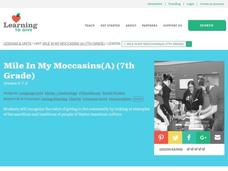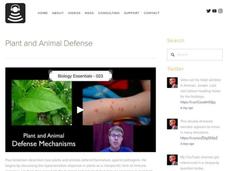Concept Map Teacher Resources
Concept maps are an effective way to organize thoughts, arrange information, and think critically about the material in front of you. While concept maps may be more prevalent in language arts, there are lots of ways to bring the model to math, science, social studies, music, and even physical education!
Start out with a reproducible graphic organizer that works for any topic in any subject. This language arts presentation explains how to create a personal concept map, step by step, that leads well into a unit on autobiographical writing. Additionally, concept maps are just one of many ways to respond to reading literature or informational text in a packet of many different graphic organizers.
Increase accessibility for all students with digital tools, such as Inspiration® software or an app that allows learners to create custom maps based on their individual needs. A PDF provides users with three editable boxes and endless possibilities.
Bring concept maps to other classes as well! An array of maps depicts the branches of science and prompts class members to fill in the blanks, while a shorter resource uses a blank map and a word bank to reinforce young biologists’ knowledge of cell structure. Tennis fans will love this concept map on vocabulary from the sport—a great way to introduce or review the rules of the game!
Genetics and Heredity: The Next Generation
Body Systems
Metamorphic Rock Notes
States of Matter
Slavery Issue And Views North Versus South Around 1850s
Mercer Mayer 1: Guided Reading and Using Concept Maps
Mile in My Moccasins
NGSS: Stability and Change
Biotic and Abiotic Factors
Environmental Matter Exchange
Compartmentalization
Life Requires Free Energy
Transport Across Cell Membranes
Viral Replication
Plant and Animal Defense
Scientific Evidence for Evolution
Natural Selection
Examples of Natural Selection
What Caused The Industrial Revolution In Maine?
Defining Agriculture and Natural Resources
Skeletal, Skin, and Muscular Systems
Discipline vs. Self-Discipline
What On Earth
Summarizing and Mapping for Comprehension
Other popular searches
- Cell Transport Concept Map
- Blank Concept Maps
- Genetic Concept Map
- Weather Concept Map
- Krebs Cycle Concept Map
- Science Concept Map
- Phylum Chordata Concept Map
- Concept Map Rubrics
- Inspiration Concept Map
- Dna Structure Concept Map
- Concept Map in Science
- Rock Concept Maps

























